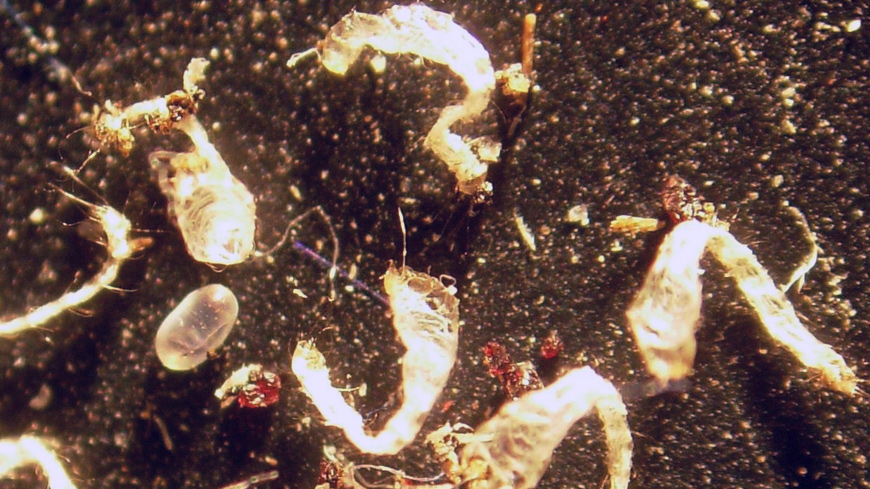Summary
Flea larvae molt twice, once between each of their three stages. While pupating, two more molts are completed within a cocoon before an adult flea emerges.
Details
Larval Molts
Cat flea larvae develop through three stages. At each respective stage, the larval forms are called first, second, and third instars. Molts occur once between each of the three stages, a total of two times. As a result of molting, each larval instar grows progressively larger in size.
Flea larvae are naturally active and become excited when disturbed. Or they will be in periods of quiescence where they are coiled up. However, prior to molting, they will lie stretched out at full length.

Img 1 Shed flea larval casings (exuviae) found in the environment from previous moults.
After each molt, the larvae leave behind their old casings (exuviae) in the environment Img 1. Flea larvae have been observed to consume their discarded casings.
Pupal Molts
Once a larva has fully mature into a third instar, it will spin a cocoon around itself to prepare for pupation. Two more molts, larval-pupal and pupal-imago, are completed within the cocoon before an adult flea emerges.
The Molting Process
Flea larvae are encased in a rigid outer cuticle. This external skeleton keeps them locked into a fixed size and prevents growth. In order to grow, the larvae must periodically go through a process of ecdysis (moulting) where they shed their cuticle.
Prior to shedding, the epidermis detaches itself from the old cuticle and excretes a new one. Enzymes are then produced to erode the old cuticle. Eventually the larvae are able to pull themselves out of their old encasement. During this process, they continue to behave normally, because muscle attachments and nerve connections are unaffected.




You must log in to post a comment. Log in now.